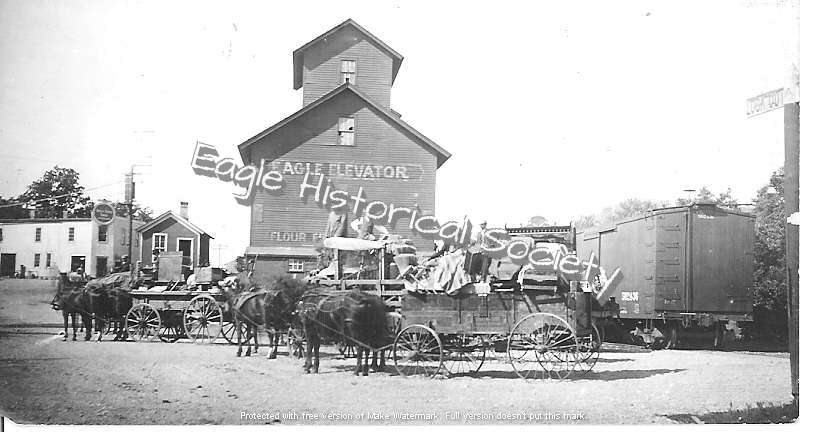The first pioneers in Eagle and the surrounding area spent all their time gathering enough food and wood to survive the cold long winter until the next planting season. As time went by, farmers cleared more fields for planting, and with the growth of industry in large cities like Milwaukee and Chicago, the demand for grain increased. By the late 19th century, local farmers produced more than enough grain for their families, and were able to sell their excess to grain dealers.
Grain Storage
The first grain storage bins were flat warehouses holding grain in sacks or barrels, but by the beginning of the 20th century, the increased demand by cities, and greater production by farmers, required a new way to handle and move large amounts of grain quickly. Grain elevators were developed to meet the demand to receive, store, and transfer grain in bulk quantities.
A grain elevator is a structure that stores dry grains, handling grain in bulk rather than bags or sacks, and then stores, moves, and sorts grain vertically. Vertical storage proved to be the best method of handling grain because, once elevated, the grain flows by gravity in tall, narrow bins, therefore less power and labor are needed.

“Rural” or “country elevators”, like the one in Eagle, were located along railroad sidetracks and received most of their grain from local farmers. Rural elevators were designed to a standard plan so loading and unloading railroad cars was easy and quick. That’s why so many of them look similar.
Next time – “Components and Construction of Grain Elevators”